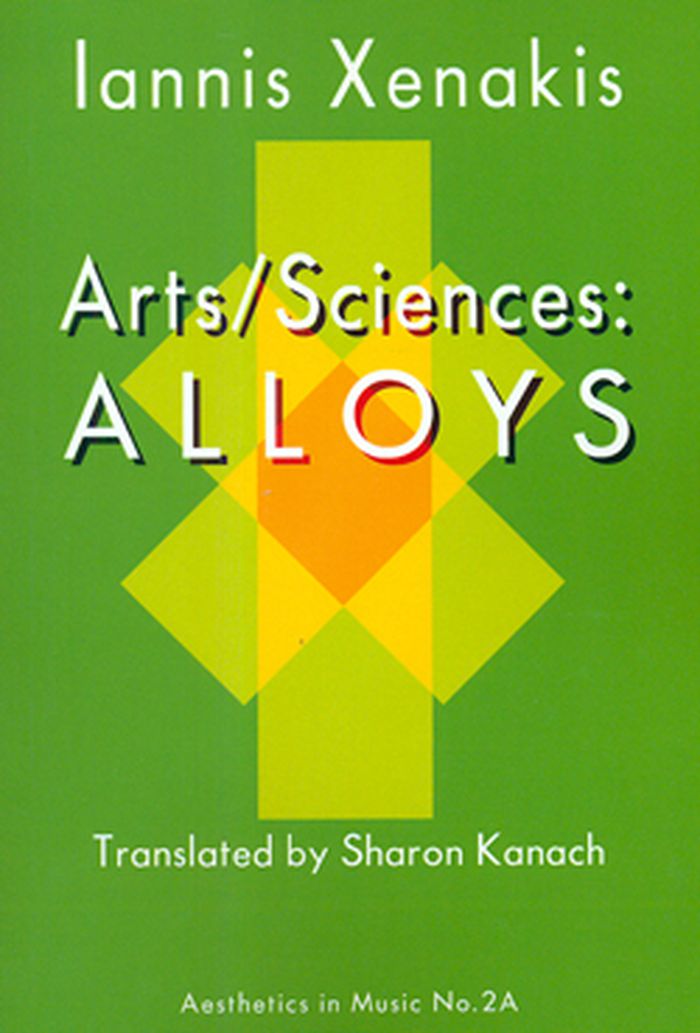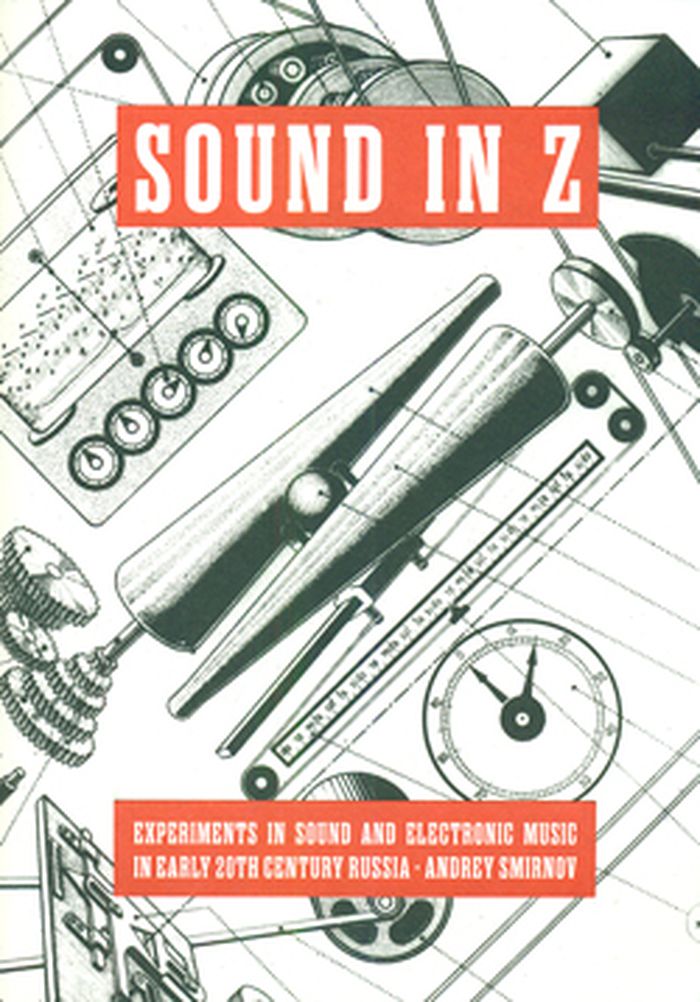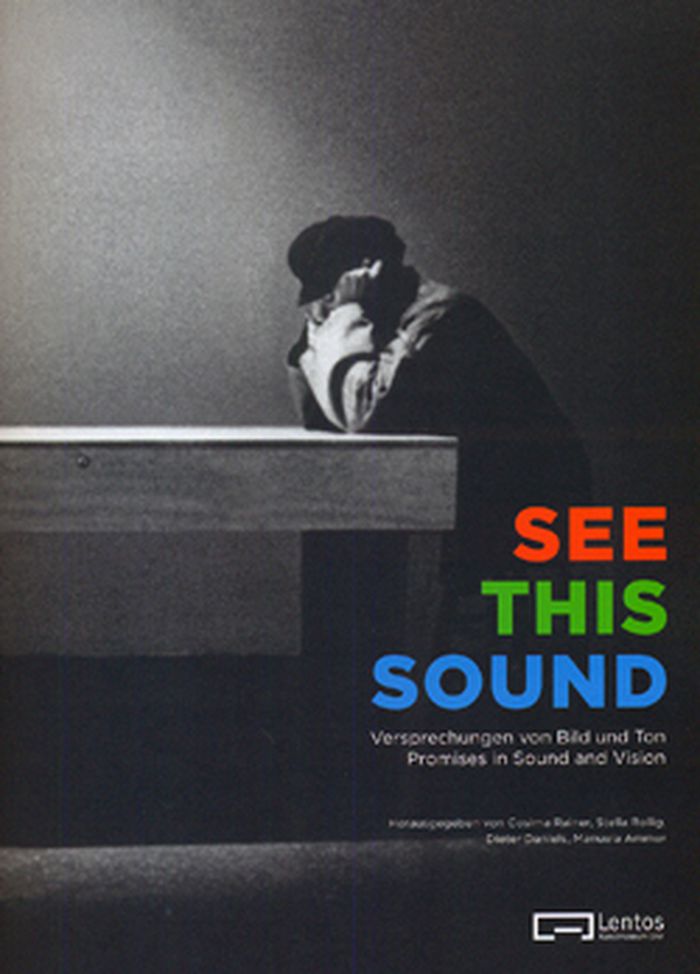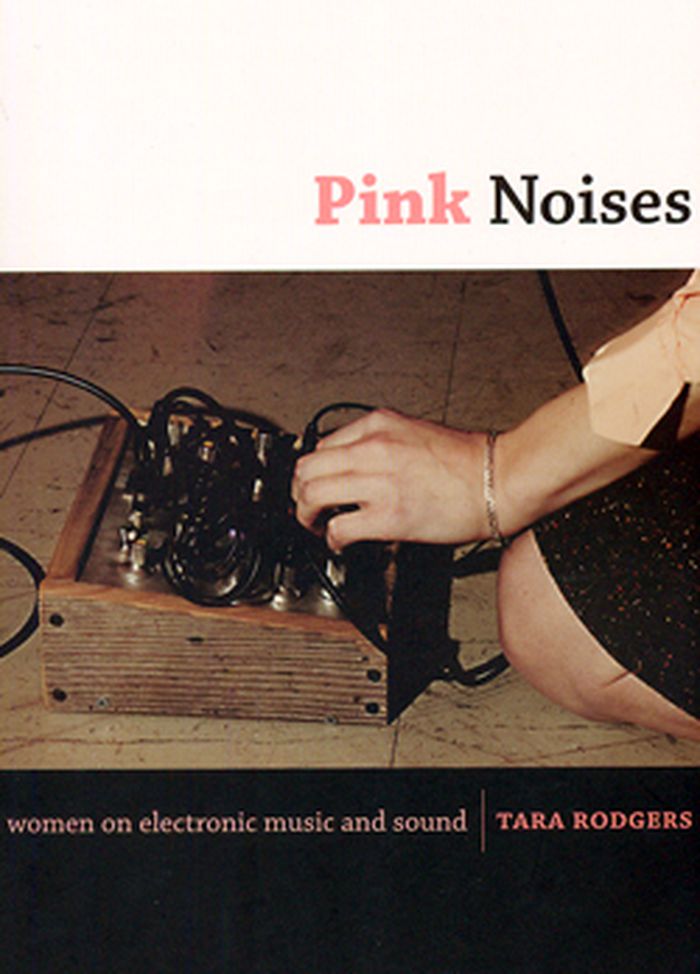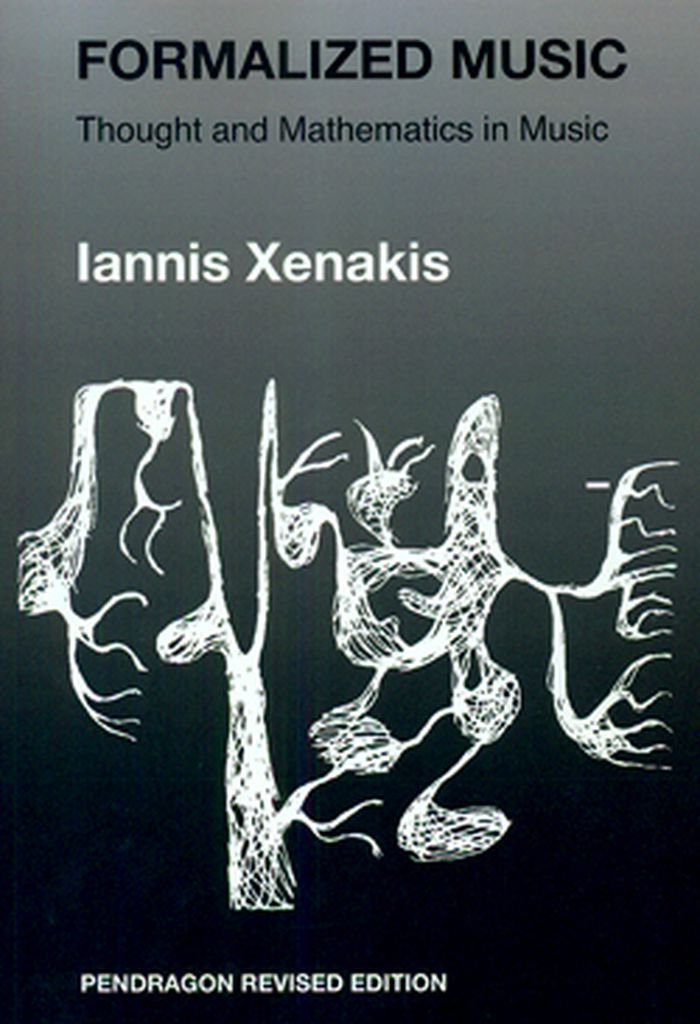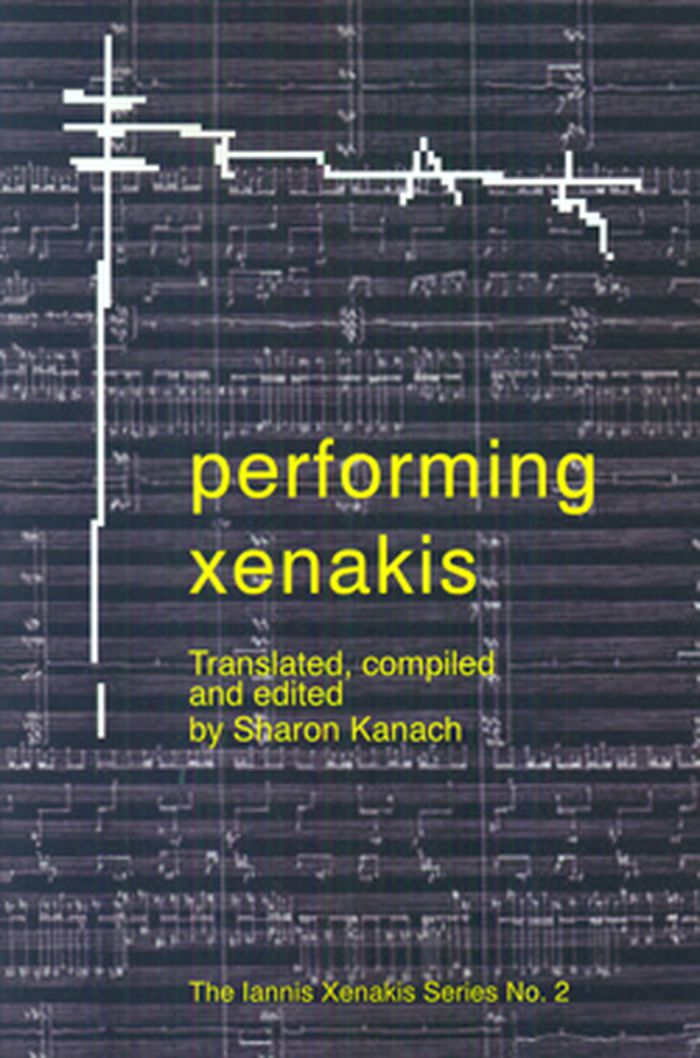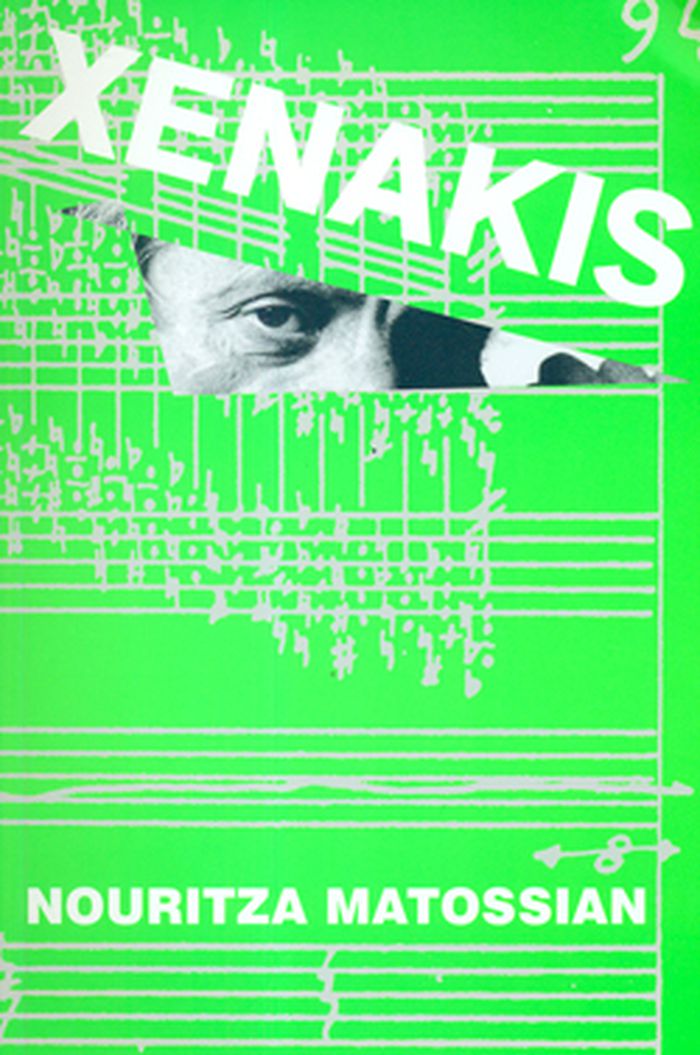Arts/sciences: Alloys
$52.00
(disponible sur commande)
Résumé:
Iannis Xenakis succeeds in unraveling the intricate web between the arts and sciences, thereby demonstrating their interdependency as in the components of an alloy. In this translation Xenakis explains not only his musical and theoretical writings - but also the role of mathematics as a philosophical catalyst in both his musical and architectural works. He discusses in(...)
Arts/sciences: Alloys
Actions:
Prix:
$52.00
(disponible sur commande)
Résumé:
Iannis Xenakis succeeds in unraveling the intricate web between the arts and sciences, thereby demonstrating their interdependency as in the components of an alloy. In this translation Xenakis explains not only his musical and theoretical writings - but also the role of mathematics as a philosophical catalyst in both his musical and architectural works. He discusses in detail his unique use of computers as a graphic tool in the composition of some of his scores.
Acoustique
$38.00
(disponible sur commande)
Résumé:
Sound in Z supplies the astounding and long-lost chapter in the early story of electronic music: the Soviet experiment, a chapter that runs from 1917 to the late 1930s. Its heroes are Arseny Avraamov, inventor of Graphic Sound (drawing directly onto magnetic tape) and a 48-note scale; Alexei Gastev, who coined the term "bio-mechanics"; Leon Theremin, inventor of the(...)
Sound in Z: experiments in sound and electronic music in early 20th century Russia
Actions:
Prix:
$38.00
(disponible sur commande)
Résumé:
Sound in Z supplies the astounding and long-lost chapter in the early story of electronic music: the Soviet experiment, a chapter that runs from 1917 to the late 1930s. Its heroes are Arseny Avraamov, inventor of Graphic Sound (drawing directly onto magnetic tape) and a 48-note scale; Alexei Gastev, who coined the term "bio-mechanics"; Leon Theremin, inventor of the world's first electronic instrument, the Theremin; and others whose dreams for electronic sound were cut short by Stalin's regime. Drawing on materials from numerous Moscow archives, this book reconstructs Avraamov's "Symphony of Sirens," an open-air performance for factory whistles, foghorns and artillery fire first staged in 1922, explores Graphic Sound and recounts Theremin's extraordinary career-compiling the first full account of Russian electronic music.
Acoustique
See this sound
$60.00
(disponible sur commande)
Résumé:
As the status of sound in art and music evolves and redefines itself, so too does sound art find new ways of describing its history. See This Sound compiles a huge number of artists, filmmakers, composers and performers, reaching back into the early twentieth century and into the present to survey overlaps between not only sound and art, sound and film, and the metaphor(...)
See this sound
Actions:
Prix:
$60.00
(disponible sur commande)
Résumé:
As the status of sound in art and music evolves and redefines itself, so too does sound art find new ways of describing its history. See This Sound compiles a huge number of artists, filmmakers, composers and performers, reaching back into the early twentieth century and into the present to survey overlaps between not only sound and art, sound and film, and the metaphor of cinema as rhythm or symphony. Proceeding chronologically, the book takes the early cinematic “eye music” of Hans Richter as a starting point, noting parallel works by Walter Ruttmann and Oskar Fischinger; moving into the postwar period, the art/cinema/ music experiments of Peter Kubelka, Valie Export and Michael Snow are discussed, establishing precedents to similar work by Rodney Graham, Carsten Nicolai, Jeremy Deller and many others. In its scope and intelligence, See This Sound is a unique survey of this realm.
Acoustique
$33.95
(disponible sur commande)
Résumé:
Acoustic Territories: Sound Culture and Everyday Life offers an expansive reading of auditory life. It provides a consideration of the performative dynamics inherent to sound culture and acts of listening, and discusses how auditory studies may illuminate understandings of contemporary society. Combining research on urbanism, popular culture and auditory issues, it opens(...)
Acoustic territories: sound culture and everyday life
Actions:
Prix:
$33.95
(disponible sur commande)
Résumé:
Acoustic Territories: Sound Culture and Everyday Life offers an expansive reading of auditory life. It provides a consideration of the performative dynamics inherent to sound culture and acts of listening, and discusses how auditory studies may illuminate understandings of contemporary society. Combining research on urbanism, popular culture and auditory issues, it opens up multiple perspectives. Brandon LaBelle traces auditory life through a topographic structure: beginning with underground territories, through to the home as a site, and then further, to streets and neighborhoods, and finally to the sky itself. This structure follows sound as it appears in specific auditory designs, as it is mobilized within various cultural projects, and queries how it comes to circulate through everyday life as a medium for social transformation.
Acoustique
$26.95
(disponible sur commande)
Résumé:
The history of listening must be constructed from narratives of myth and fiction, silent arts such as painting, the resonance of architecture, auditory artefacts and nature. In such contexts, sound often functions as a metaphor for mystical revelation, instability, forbidden desires, disorder, formlessness, the unknown, unconscious and extra-human, a representation of(...)
Sinister resonance: The mediumship of the listener
Actions:
Prix:
$26.95
(disponible sur commande)
Résumé:
The history of listening must be constructed from narratives of myth and fiction, silent arts such as painting, the resonance of architecture, auditory artefacts and nature. In such contexts, sound often functions as a metaphor for mystical revelation, instability, forbidden desires, disorder, formlessness, the unknown, unconscious and extra-human, a representation of immaterial worlds. As if reading a map of hitherto unexplored territory, Sinister Resonance deciphers sounds and silences buried within the ghostly horrors of Arthur Machen, Shirley Jackson, Charles Dickens, Algernon Blackwood, M.R. James and Edgar Allen Poe, seventeenth century Dutch genre painting from Rembrandt to Vermeer, artists as diverse as Francis Bacon and Juan Munoz, Ad Reinhardt and Piero Della Francesca, and the writing of many modernist authors, including Virginia Woolf, Samuel Beckett, James Joyce and William Faulkner. Threaded through the book is Marcel Duchamp's curious observation "One can look at seeing but one can't hear hearing" and his concept of the infra-thin, those human experiences so fugitive that they exist only in the imaginative absences of perception.
Acoustique
$28.85
(disponible sur commande)
Résumé:
Pink Noises brings together twenty-four interviews with women in electronic music and sound cultures, including club and radio DJs, remixers, composers, improvisers, instrument builders, and installation and performance artists. The collection is an extension of Pinknoises.com, the critically-acclaimed website founded by musician and scholar Tara Rodgers in 2000 to(...)
Pink noises: Women on electronic music and sound
Actions:
Prix:
$28.85
(disponible sur commande)
Résumé:
Pink Noises brings together twenty-four interviews with women in electronic music and sound cultures, including club and radio DJs, remixers, composers, improvisers, instrument builders, and installation and performance artists. The collection is an extension of Pinknoises.com, the critically-acclaimed website founded by musician and scholar Tara Rodgers in 2000 to promote women in electronic music and make information about music production more accessible to women.
Acoustique
$52.00
(disponible sur commande)
Résumé:
A revised, and expanded edition of Iannis Xenakis's landmark book of 1971. In addition to three new chapters examining recent breakthroughs in music theory, two original computer programs illustrating the actual realization of newly proposed methods of composition, and an appendix of the very latest developments of stochastic synthesis as an invitation to future(...)
Formalized music: Thought and mathematics in music
Actions:
Prix:
$52.00
(disponible sur commande)
Résumé:
A revised, and expanded edition of Iannis Xenakis's landmark book of 1971. In addition to three new chapters examining recent breakthroughs in music theory, two original computer programs illustrating the actual realization of newly proposed methods of composition, and an appendix of the very latest developments of stochastic synthesis as an invitation to future exploration, Xenakis offers a critical self-examination of his theoretical propositions and artistic output of the past thirty-five years.
Acoustique
Performing Xenakis
$44.95
(disponible sur commande)
Résumé:
This volume is a collection of essays by thirty contributors, all internationally recognized performers of Xenakis' music. Many of these artists have worked closely with Xenakis and several works are discussed by their dedicatees. These testimonies prove, through real life experience and performance, the feasibility of realizing his very difficult writing, not only(...)
Performing Xenakis
Actions:
Prix:
$44.95
(disponible sur commande)
Résumé:
This volume is a collection of essays by thirty contributors, all internationally recognized performers of Xenakis' music. Many of these artists have worked closely with Xenakis and several works are discussed by their dedicatees. These testimonies prove, through real life experience and performance, the feasibility of realizing his very difficult writing, not only attested to by those close to the composer during his lifetime, but also by the younger generation that continues to be drawn to it. Each essay gives a new perspective: on what the composer was really looking for, on tricks of the trade for negotiating treacherously technical prowess, or on the attainment of an enhanced sense of self through the performance of this music. Following an extensive preface by Kanach, who collaborated closely with Xenakis from the late 1970s until his death in 2001, the book is divided into chapters organized by family of instruments. Every instrument of the orchestra is discussed by its practitioner; issues unique to the voice, as well as ensemble and orchestral works are explored, and two contributions concern the performance of Xenakis pioneering electronic works.
Acoustique
Kéleütha
$29.95
(disponible sur commande)
Résumé:
Pour définir le sens de la musique, il faudrait revenir aux notions simples de sens, de messages-signaux à ces sens, et de pensées véhiculées par ces signaux. Le point donc de départ et d'arrivée est l'homme. La musique étant un message (véhiculé par la matière) entre la nature et l'homme ou entre les hommes entre eux, elle doit être apte à parler à toute la gamme humaine(...)
Kéleütha
Actions:
Prix:
$29.95
(disponible sur commande)
Résumé:
Pour définir le sens de la musique, il faudrait revenir aux notions simples de sens, de messages-signaux à ces sens, et de pensées véhiculées par ces signaux. Le point donc de départ et d'arrivée est l'homme. La musique étant un message (véhiculé par la matière) entre la nature et l'homme ou entre les hommes entre eux, elle doit être apte à parler à toute la gamme humaine de perception et d'intelligence. De plus, l'homme aimera toujours chanter puisqu'il a une voix, et toujours danser puisqu'il a un corps en liberté. L'expansion prodigieuse du jazz, avec ses rythmes de danse puissants et ses mélodies brutales, qui contrastaient avec la somnolence des musiques légères ou folkloriques, en est une démonstration. Un courant constant entre la nature biologique de l'homme et les constructions de l'intelligence doit être établi, sinon les prolongements abstraits de la musique actuelle risquent de s'égarer dans un désert de stérilité.
Acoustique
Xenakis
$54.99
(disponible sur commande)
Résumé:
Since it was first published in 1981, Nouritza Matossian's perceptive book on Xenakis has helped students, musicians and audiences appreciate his music. She shares his Greek culture and interest in philosophy, and has chronicled vital discoveries in his work. A reserved man, he spoke frankly to her about his mysterious methods of composition, and his relationships with(...)
Xenakis
Actions:
Prix:
$54.99
(disponible sur commande)
Résumé:
Since it was first published in 1981, Nouritza Matossian's perceptive book on Xenakis has helped students, musicians and audiences appreciate his music. She shares his Greek culture and interest in philosophy, and has chronicled vital discoveries in his work. A reserved man, he spoke frankly to her about his mysterious methods of composition, and his relationships with Varese, Messiaen, Le Corbusier and Boulez.
Acoustique
